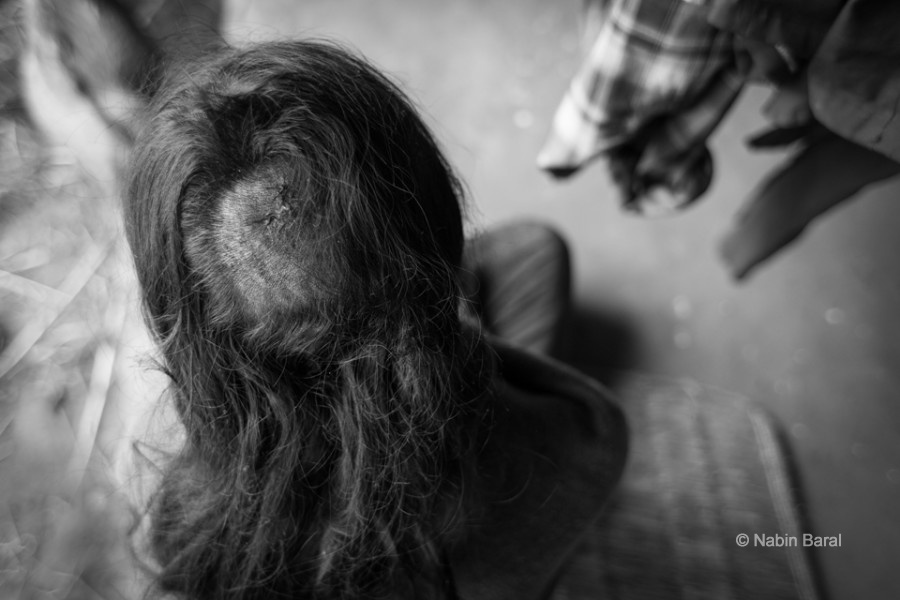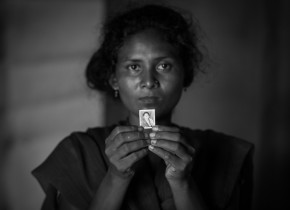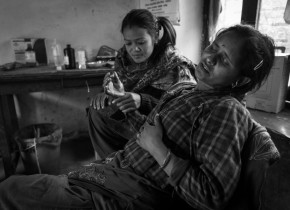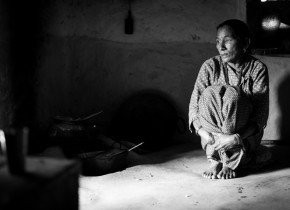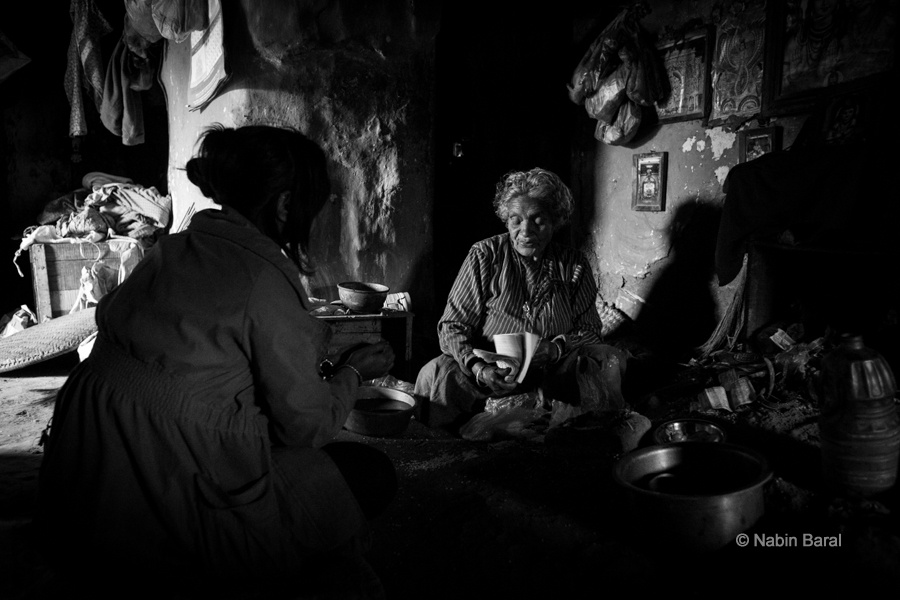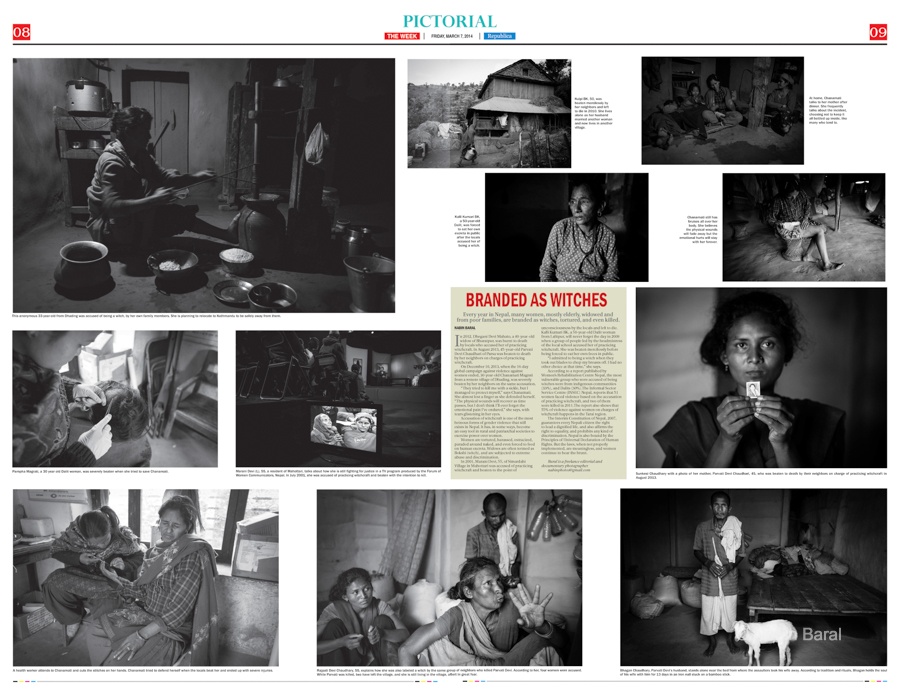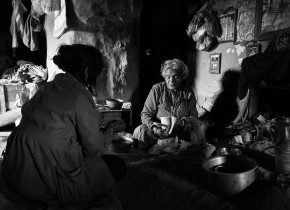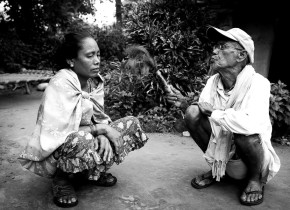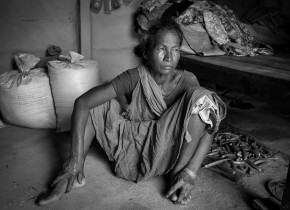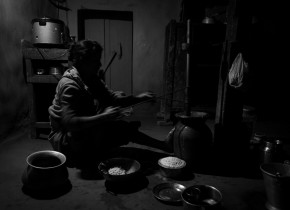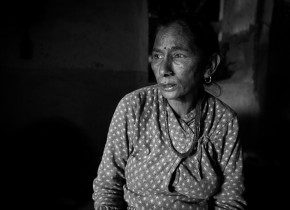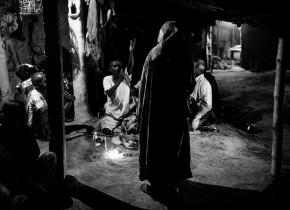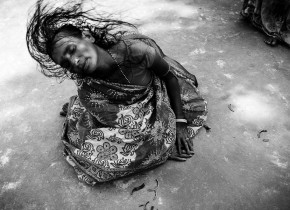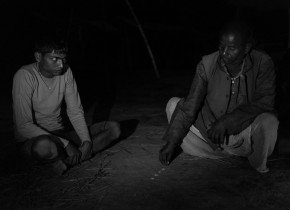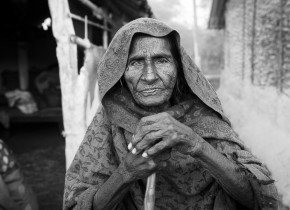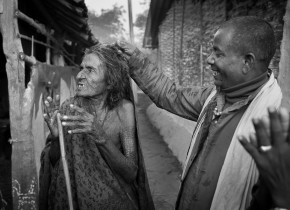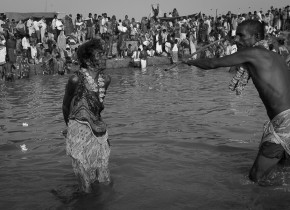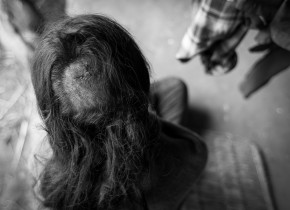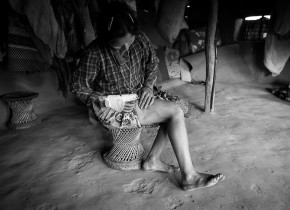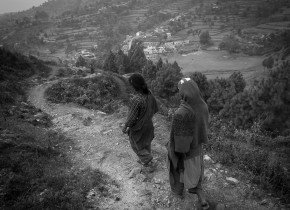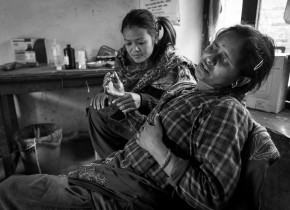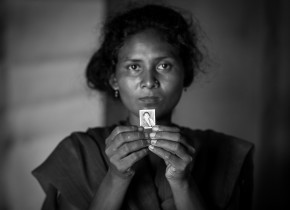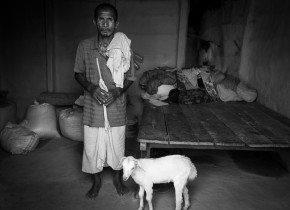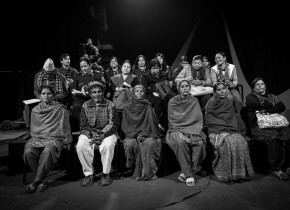Victims of Superstition: Branded as Witches
Every year hundreds of women, mostly elderly, widowed and from lower caste and poor families, are branded as witches, tortured, and even killed in Nepal.
My ongoing personal photo documentary project…..Victims of Superstitions: Branded as witches
There are many forms of violence perpetuated against women worldwide even in the 21st century. Accusation of witchcraft is one the serious forms of violence that still exists in Nepal. Many people in Nepal are still superstitious and believe in supernatural powers. Centuries old conservative beliefs are still deep-rooted in social and cultural structures of the society.
One of the example of such superstition that is attached with cultural celebration is the so-called “Ghost Festival” that happens at the bank of Kamala River on every Kartik full moon. Thousands of pilgrims visit to Kamala River on the eve of Kartik full moon with “Dhamis” with the belief that the Dhamis will help them to eradicate their illness that they believe happened due to the family god ” Kul deveta” or other evil person in their village and society.
The devotion of thousands of pilgrims towards the Dhamis on this festival renews the beliefs of people on superstition every year. The centuries old conservative beliefs then become the part of the society and it is integrated in the cultural activities by the Dhamis to maintain their superior position in the society that rules the mind of these people who become superstitious and some time these superstitious beliefs lead to violence in the society whether it is physical or mental. Kanti Yadav is one of many women who are victim of such violence which is against the law but that happens on the name of superstation that is integrated in Kamala River Cultural Pilgrimages in Nepal.
The Government has shown little presence to eradicate such beliefs and ill practices. Most people still rely heavily on traditional methods of healing in Nepal. Health care is usually left to Dhamis or Witch Doctors. When people do not have access to modern health services, doctors are substituted by Dhamis. As a result, the superstitious accusations of witchcraft become a part and parcel of people’s lives in many villages and towns. Accusation of witchcraft has become an easy tool in society to exercise power over women in rural areas in a patriarchal society.
Women are tortured, harassed, and paraded naked, forced to eat human excreta, and ostracized from their village. Often widows, from poor and lower classes and Dalits (so called low-castes) are termed as Bokshi, or witch, and are subjected to extreme abuse and discrimination. Survivors of these violations are often left in very difficult circumstances– isolated and alone.
In February 2012, Dhegani Devi Mahato, a widow aged 40, was burnt to death by locals accusing her of practicing witchcraft in Bharatpur district of Nepal. In August 2013, a 45-year-old woman, Parvati Devi Chaudhari of Parsa District was beaten to death by her neighbors on charges of practicing witchcraft.
On 10th December 2013, the day when the 16-day global campaign against violence against women ended, Chanamati Magrati from a remote village of Dhading district, was severely beaten on the accusation of witchcraft by her neighbors, until she fell unconscious. After the incident I went to the village of Chanamati Magrati to continue my photo documentation project on this issue. Chanamati said, “They attempted to kill me with a sickle, but I managed to save my neck”. She almost lost one of her fingers as she defended herself. “The physical wounds in my body may recover as time goes, but the pain in my heart will never recover. They accused me of being a witch”, Chanamati added with great grief.
Kalli Kumari B.K, a 50-year-old Dalit woman from Lalitpur district of Nepal, remembers 20th March 2009 as a black day in her life. A group of people led by the Headmistress of the local school accused Kalli of practicing witchcraft. She was mercilessly beaten up and forced to eat her own excreta in public. “I accepted that I am witch when they took out blades to chop my breasts, I had no other choice at that time”, she said with tears in her eyes.
The Constitution of Nepal, guarantees the right to have dignified life as fundamental right and also affirms the right to equality and prohibits any kind of discrimination. Nepal is also bound by the principles of Universal Declaration of Human Rights. But even as the law guarantees rights, women are still tortured, killed and discriminated on charges of witchcraft. In July 2001, Marani Devi, 55, from Simardahi Village in Mahottari District was accused of practicing witchcraft and beaten mercilessly by villagers and left to dead. She is still fighting in Nepal’s Supreme Court to get justice.
According to a report published by Women’s Rehabilitation Centre Nepal, the most vulnerable group who were accused as witches were from indigenous communities, (33%) and Dalit, (30%). Informal Sector Service Centre Nepal, reports that 51 women faced violence based on the accusation of witchcraft and two of them were killed in 2011 in Nepal. The report also shows that 55% violence against women on charges of witchcraft is from the Terai region of Nepal.
I believe in the power of photo stories as one of the best mediums of communication for social awareness and change. To complete this photo documentary project, any help in any form, from any person or organization is appreciated.
Click on the photos for slideshow
- Sunkesi Chaudhari shows photo of her mother, Parvati Devi Chaudhari, 45, who was beaten to death by her neighbors on charge of practicing witchcraft at midnight of 16 August 2013 in a remote village in Terai Ragion of Nepal. 24 August, 2013, Supauli, Parsa, Nepal.
- Chanamati Magrati, 30, a Dalit woman, suffers with pain in a local health post after a health worker cuts her wound stitches. She was severely beaten on the accusation of witchcraft by her neighbors, until she fell unconscious on December 10, 2013. 18 December 2013 , Dhading, Nepal.
- Kalli Kumari B.K, a 50-year-old Dalit woman from Lalitpur district of Nepal, remembers 20th March 2009 as a black day in her life. A group of people led by the Headmistress of the local school accused Kalli of practicing witchcraft. She was mercilessly beaten up and forced to eat her own excreta in public. 2 January, 2014, Lalitpur, Nepal.
http://e.myrepublica.com/component/flippingbook/book/1529-republica-07-march-2014/1-republica.html
Click on the photos below for slideshow
- A discouraged college student visits a Mata, a “spiritual adviser”, because of a failure in her coursework. Even the young and educated are so indoctrinated in superstition that they believe that someone else has the power to fix their problems and shortcomings. February 9 2014, Kathmandu.
- Champi Chaudhary has daily chronic headaches and visits Buddhi Ram Chaudhary because she believes he has the ability to dispel any “evil spirits” that are possibly afflicting her. She does not have the financial means or access to proper medical treatment therefore the actual cause of her headaches in undetermined. November 14, 2014. Bardiya, Nepal.
- Rajpati Devi Chaudhari, 55, was also accused of being a witch by the same group of neighbors who murdered Parvati Devi. According to her four more women were accused of being witches by the same group. Two of the women left the village, Parvati was killed and Rajpati Devi is still living in the village in isolation and terror. August 24, 2013, Supauli, Parsa, Nepal.
- Laxmi KC (who changed her name for anonymity) from Dhading district was accused of being a witch by her own family members in front of villagers at the age of 33. Her husband abandoned her to go work in Dubai. She is planning to migrate to Kathmandu in her attempt to stop the mental and emotional torture she is facing due to this accusation. She also fears for her physical safety. December 20, 2013, Dhading, Nepal.
- Kalpi was beaten mercilessly by neighbors and left to die in 2010. Kulpi is living alone since her husband married another woman and is living with the new wife in another village. “As I am living alone, I still face discrimination every day from some villagers”. December 19, 2013, Dhading, Nepal.
- Kalli Kumari B.K., a 50-year-old Dalit woman from Lalitpur district of Nepal, remembers March 29th 2009 as the darkest and most traumatic day of her life. A group of fanatics led by the headmistress of the local school accused Kalli of practicing witchcraft. She was mercilessly beaten and forced to eat her own feces in public. “I had to confess that I was a witch when they took out blades to chop off my breasts, I had no other choice at that time”, she said with tears in her eyes. January 2, 2014, Lalitpur, Nepal.
- A women visits a Dhami, “witchdoctor”, the night before attending the “Ghost Festival” to eradicate evil spirits supposedly afflicting some of the villagers in Janakpur, a district in Terai region of Nepal. November 4 2014. Janakpur, Nepal.
- Another woman believes that she is ill because of a hex placed on her by a witch in her village. After visiting a Dhami the night before the “Ghost Festival” she is found in a trance state the morning of the banishing ritual festival. November 5 2014. Janakpur, Nepal.
- A Dhami, “witch doctor” practices divination to determine the reason of 18 year old Brikeah Yadav ‘s headaches, body pain and fainting. The Dhami accuses Kanti Yadev, 103 year old widow villager, of witchcraft practiced on the young man. November 5 ,2014, Janakpur, Nepal.
- Kanti Yadav, a 103 year old widow from a village of Janakpur Dristrict, is accused of being a witch. The Dhami of the same village blames Brikeah Yadav’s illness on her. November 5 2014, Janakpur, Nepal.
- A Dhami, “witch doctor” humiliates Kanti Yadav as he accuses her being a witch. November 5 2014, Janakpur, Nepal.
- Kanti Yadav a is scorned and ridiculed by a group of people led by witch doctors during a pilgrimage to Kamala River for the “Ghost Festival” for the supposed clearing of evil spirits. Kanti Yadav is exploited and used as an outcast for fanatical emotionalism by villagers instigated by the Dhamis. November 6, 2013
- Kanti Yadav is physically exposed, used and exploited as a social outcast by the Dhamis of the village. She is discriminated against for being an old woman with a physical disability (difference) who has been alone since her husband’s death and is powerless to defend herself. The Dhami is using her to suggest that he has superior power with his methods to remove supposed evil spirits from her. November 6 2014, Janakpur, Nepal.
- Pampha Magriti, a 30 year old Dalit woman, shows the scar of a head injury she sustained after she was severely beaten unconscious in her attempt to save Chanamati Magrati. Both women were brutally beaten to unconsciousness on Human Rights Day, December 10, 2013. December 17 2013 , Dhading, Nepal.
- Chanamati Magrati shows one of the scars on her body as a result of her beating. “The physical wounds in my body may recover as time goes, but the pain in my heart will never recover. They accused me of being a witch”, Chanamati said. December 17, 2013 , Dhading, Nepal.
- Pampha Magriti and Chanmati Magriti, both recovering from injuries sustained from brutal beatings, have to walk 5 hours on treacherous mountain trails to obtain basic medical care. Professional medical treatment is not available nor have they had any pain medication or management. December 18, 2013, Dhading, Nepal.
- Chanamati Magrati, a 30 year old Dalit woman, painfully suffers at a local health post while a ANM worker attends to her wound stitches. She was severely beaten unconscious by neighbors on Human Rights Day on December 10, 2013. Chanamati said, “They attempted to kill me with a sickle, but I managed to save my neck”. She almost lost one of her fingers as she defended herself. December 18, 2013 , Dhading, Nepal.
- Sunkesi Chaudhari shows a photo of her mother, Parvati Devi Chaudhari, who was beaten to death at midnight on August 16, 2013. She was 45 years old. August 24, 013, Supauli, Parsa, Nepal.
- Bhagan Chaudhari, the husband of the late Parvati Devi, stands alone near their bed where the assault began on midnight of August 16, 2013. According to their traditional ritual, Bhagan holds the soul of her wife with him for 13 days in an iron nail embedded in a bamboo stick. August 24, 2013, Supauli, Parsa, Nepal.
- Chanamati Magrati (first from left in front row), Marani Devi (third) and Kalli Kumari B.K (fifth) are featured a television talk show program produced by the Forum of Women Communicators, Nepal. In July 2001, Marani Devi was accused of practicing witchcraft and beaten mercilessly by villagers and left for dead. Justice delayed is justice denied. She is still fighting in Nepal’s Supreme Court to get justice. December 23, 2013. Kathmandu, Nepal.
